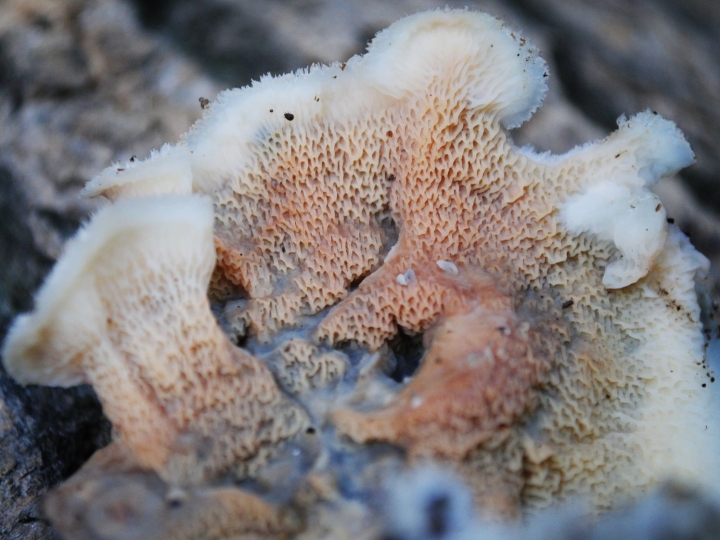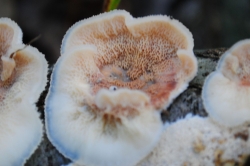A rather unique looking polypore mushroom with resemblance of slices of bacon rinds that grows on heavily decayed hardwoods.
Home / Mushroom Guide /
Jelly Rot
Jelly Rot
| Mushroom Type | |
| Common Names |
Jelly Rot (EN), Trembling Merulius (US), Jeli Gwrychog (CY), Żylak Trzęsakowaty (PL), Kocsonyás Redősgomba (HU) |
| Scientific Name |
Phlebia tremellosa |
| Synonyms |
Merulius tremellosus |
| Season Start |
All |
| Season End |
All |
| Average Mushroom height (CM) | |
| Average Cap width (CM) |
2–4 |
Please note that each and every mushroom you come across may vary in appearance to these photos.
Fruiting Body
This species might form fully resupinate, semi-pileate or pileate fruit bodies which are often overlapping and emerging to each other.
The individual fruit bodies are annual, 2–8 cm long x 2–4 cm wide, and attaching to the substrate without having a stem.
If the fruit body is not resupinate, its upper surface (skin) is finely velvety, originally white, becoming more and more translucent, and yellowish with a pinkish tint with age.
Fertile surface is merulioid (having veins and ridges instead of pores or gills), yellow, orange or pinkish orange, becoming darker with age.
Flesh
Thin, gelatinous, soft, elastic when fresh, hardens if dries. Rather colourless (hyaline), or translucent with some orange tint.
Habitat
On the dead and decayed wood of hardwoods, especially Birch, Beech, Ash etc., but rarely on conifers. Saprotrophic, causes white-rot.
Possible Confusion
Can be confused with other, even rarer Phlebia and Merulius species, but most of all with the Wrinkled Crust (Phlebia radiata).
Spore Print
Spore print is white. Spores cylindric-allantoid, smooth and colourless (hyaline) with drops, inamyloid (not staining in iodine reagents, such as Melzer’s reagent and Lugol’s solution).
Taste / Smell
Inedible. Smell and taste not distinctive.
Frequency
Common and widespread on the British Isles.
Other Facts
The genus name ‘Phlebia‘ has Greek origin (phlebs or φλέβς means vein), and means ‘having veins’. It refers to the appearance of the fertile surface of Phlebia species.
The epithet (2nd part of the scientific name) ‘tremellosa‘ means trembling, and refers to the gelatinous condition of older fruit bodies.



























Leave a Reply